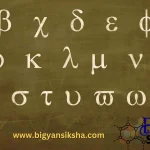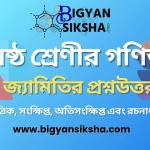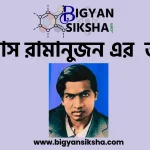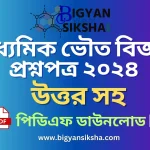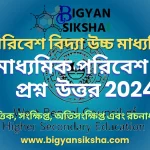২০২৪ শিক্ষাবর্ষ থেকেই উচ্চমাধ্যমিকে সিলেবাসে বিরাট বদল এসেছে । এবছর থেকে শুরু হচ্ছে সেমিস্টার পদ্ধতি। তাই সকলেরই আগ্রহ রয়েছে সেমিস্টার পদ্ধতিতে একাদশ শ্রেণীতে কি কি বিষয় কবে কবে পরীক্ষা হবে তাই ধারাবাহিকভাবে বিভিন্ন বিষয়ের সিলেবাস এখানে দেওয়া হলো। এখানে রয়েছে একাদশ শ্রেণির পদার্থবিদ্যার সিলেবাস এবং কোন সেমিস্টারে কি কি চ্যাপ্টার পরীক্ষা হবে তার বিবরণ
CLASS – XI
SEMESTER – I
SUBJECT: PHYSICS ( PHYS )
FULL MARKS: 35 CONTACT HOURS: 70 Hours
COURSE CODE : THEORY
| UNIT No | TOPICS | CONTACT HOURS | MARKS |
|---|---|---|---|
| 1 | PHYSICAL WORLD AND MEASUREMENT Physics – scope and excitement, nature of physical Law, physics technology and society. Need for measurement, units of measurement, length, mass and time measurement, accuracy and precision of measuring instruments, error in measurement, rounding off and order of magnitude, significant figures. Dimensions of physical quantities, dimensional analysis and its applications. | 6 | 3 |
| 2 | KINEMATICS SUB TOPIC : MOTION IN A ONE DIMENSION AND TWO DIMENSION Frame of reference (inertial and non-inertial frames).Motion in a straight line, position – time graph, speed and velocity. Elementary concepts of differentiation and integration for describing motion. Uniformly accelerated motion. Graphical analysis: position – time and velocity – time graph and calculation of relevant quantities Relations for uniformly accelerated motion (using graphical and calculus method). SUB TOPIC : MOTION IN A PLANE Scalar and vector quantities, position and displacement vectors, general vectors and their notations, equality of vectors, multiplication of vectors by a real number, addition and subtraction of vectors. Relative velocity. Unit vector, resolution of a vector in a plane – rectangular and non – rectangular components. Scalar and vector product. Motion in a plane. Cases of uniform velocity and uniform acceleration – projectile motion. | 24 | 12 |
| 3 | LAWS OF MOTION Intuitive concept of force. Inertia, Newton’s first law of motion. Momentum and Newton’s second law of motion, impulse and concept of impulsive force, Newton’s third law of motion and its examples. Law of Conservation of Linear Momentum and its application, concept of free body diagram and its application (simple cases). Equilibrium of concurrent forces. Static and kinetic friction, laws of friction, ideas of coefficient of friction, angle of friction and angle of repose. Rolling friction. Dynamics of uniform circular motion, centripetal force, and example of circular motion (motion of a cyclist, vehicle on level circular road, vehicle on bank road). Concept of centrifugal force. | 16 | 08 |
| 4 | WORK ,ENERGY AND POWER Work done by a constant force and variable force, kinetic energy. Work – energy theorem, power. Notion of potential energy, potential energy of a spring, conservative forces, conservation of mechanical energy (kinetic and potential energies). Non-conservative forces. Motion in a vertical circle. Elastic and inelastic collisions in one and two dimensions. | 10 | 05 |
| 5 | MOTION OF SYSTEM OF PARTICLES AND RIGID BODY Centre of mass of a two – particle system. Momentum conservation and motion of centre of mass. Centre of mass of a rigid body (examples of simple geometrical bodies). Moment of a force, torque, angular momentum, conservation of angular momentum with examples. Equilibrium of rigid bodies, rigid body rotation and equations of rotational motion, comparison of linear and rotational motion, moment of inertia, radius of gyration. Values of moment of inertia for simple geometrical objects (no derivation). Statement of parallel and perpendicular axis theorem and their applications | 14 | 07 |
FOR SEMESTER I
CONTACT HOURS FOR THEORY PART – 70 HOURS
CONTACT HOURS FOR PRACTICAL PART – 30 HOURS
CONTACT HOURS FOR REMEDIAL CLASSES AND TUTORIAL – 10 HOURS
SO TOTAL CONTACT HOURS FOR 1st SEMESTER IS 110 HOURS
WBCHSE Class 11 Physics Syllabus 2024 দ্বিতীয় সেমিস্টার এর পদার্থবিদ্যা সিলেবাস এখানে আছে
CLASS – XI
SEMESTER – II
SUBJECT: PHYSICS ( PHYS )
FULL MARKS: 35 CONTACT HOURS: 60 HOURS
COURSE CODE : THEORY
| UNIT No. | TOPICS | CONTACT HOURS | MARKS |
|---|---|---|---|
| 6 | GRAVITATION The universal law of gravitation. Acceleration due to gravity and its variation with altitude, depth and rotation of earth. Kepler’s laws of planetary motion. Gravitational potential energy, Gravitational potential. Escape velocity, Orbital velocity of a satellite. Geostationary satellite. | 9 | 5 |
| 7 | PROPERTIES OF BULK MATTER SUB TOPIC : MECHANICAL PROPERTIES OF SOLIDS Elastic behavior, stress – strain relationship. Hooke’s law, Young’s modulus( Y), bulk modulus(K), shear modulus of rigidity( η), Poisson’s ratio(σ), relation between Y, K, η,σ (no derivation). Elastic energy for stretched string and extended spring. SUB TOPIC: MECHANICAL PROPERTIES OF FLUIDS Streamline and turbulent flow, Critical velocity. Viscosity, Newton’s law of viscosity, Stoke’s law, terminal velocity, Reynolds’ number. Bernoulli’s theorem and its applications. Surface energy and surface tension, angle of contact, excess of pressure, application of surface tension, ideas to drops, bubbles. Capillary rise and fall (no derivation, only analytical treatment). SUB TOPIC : THERMAL PROPERTIES OF MATTER Heat, temperature, thermal expansion of solids, liquids, and gases. Anomalous expansion of water and its effects. Specific heat capacity, principle of calorimetry, change of state, latent heat capacity. Heat transfer: conduction, convection and radiation, black body radiation, Kirchhoff’s law, absorptive and emissive powers, thermal conductivity. Newton’s law of cooling, Wien’s displacement law, Stefan’s law and Boltzmann’s correction. | 17 | 10 |
| 8 | THERMODYNAMICS Thermal equilibrium and definition of temperature, Zeroth law of thermodynamics. Heat, work and internal energy, First law of thermodynamics, CP and CV and determination of their relation. Isothermal and Adiabatic processes. P-V diagram, calculation of external work done in different cases. Second law of thermodynamics, reversible and irreversible processes. Heat engine, Calculation of efficiency of Carnot engine only, efficiency of refrigerator (only qualitative idea). | 9 | 5 |
| 9 | KINETIC THEORY OF GASES Assumptions for the kinetic theory of gases, RMS speed of gas molecules, degrees of freedom. Concept of pressure, kinetic energy and temperature in the light of kinetic theory, ideas of gas laws in the light of kinetic theory of gases. Law of equipartition of energy (statement only) and application regarding of specific heats of the gases. Concept of mean free path, Avogadro’s number. | 8 | 5 |
| 10 | OSCILLATION AND WAVES SUB TOPIC : OSCILLATION Periodic motion-period, frequency, displacement as a function of time, Periodic functions. Simple harmonic motion (S.H.M) and its equation, phase, oscillation of a spring – restoring force and force constant, combination of springs, energy in S.H.M – kinetic and potential energies. Simple pendulum, loaded spring – derivation of expression for time period. Free, damped and forced oscillations, resonance (qualitative ideas only). SUB TOPIC : WAVES Wave Motion: longitudinal and transverse waves, speed of travelling wave motion. Velocity of sound in gaseous medium – Newton’s law and Laplace’s correction. Displacement relation for a progressive wave. Principle of superposition of waves. Formation of Stationary waves, reflection of waves in string and organ pipes: fundamental mode and harmonics. Formation of beats. Doppler effect of sound. | 17 | 10 |
FOR SEMESTER II
CONTACT HOURS FOR THEORY PART – 60 HOURS
CONTACT HOURS FOR PRACTICAL PART – 20 HOURS
CONTACT HOURS FOR REMEDIAL CLASSES AND TUTORIAL – 10 HOURS SO TOTAL CONTACT HOURS FOR 2nd SEMESTER IS 90 HOURS.
WBCHSE Class 11 Physics Syllabus 2024 এর Practical বিষয়ের সিলেবাস দেওয়া হল
CLASS: XI
SUBJECT: PHYSICS ( PHYS )
COURSE CODE: PRACTICAL
FULL MARKS: 30 CONTACT HOURS: 50 HOURS (30+ 20)
PRACTICAL WORKS + VIVA (16+4) = 20 MARKS
Given below is a list of required experiments. In each experiment students are expected to record their observations in tabular form with unit at the column head.
Students should plot an appropriate graph where required, work out the necessary calculation and arrive at the result.
SECTION: A
| No. OF EXPT. | Topics |
|---|---|
| 1 | To measure diameter of a small spherical / diameter and length of a cylindrical body using slide calipers, hence calculate its volume with proper formula |
| 2 | To measure the internal diameter and depth of a beaker using slide calipers and hence find its volume. |
| 3 | To measure diameter of a given thin wire using screw gauge |
| 4 | To determine the volume of an irregular but uniform thickness lamina using screw gauge and graph paper. |
| 5 | To determine the radius of curvature of a given spherical surface by a spherometer. |
| 6 | Consider equilibrium of three concurrent coplanar forces. To verify the parallelogram Law of forces and to determine weight of a body. |
| 7 | To study the force of limiting friction for a wooden block placed on horizontal plane surface and to study is relationship with normal reaction. To determine the coefficient of friction. |
| 8 | To study the downward force acting along the inclined plane on a roller due to gravitational pull of earth and to study its relationship with angle of inclination(θ) by plotting graph between force and sin θ |
SECTION: B
| 1 | To study the acceleration due to gravity by measuring variation in time period (T) with effective length (L) of a simple pendulum, plot graphs of L – T and L – T2 . Determine the effective length of second pendulum from L – T2 graph |
| 2 | To study the force constant of a spring and to study variation in time period of oscillation with mass (m) of a body suspended by a spring. To find the spring constant by plotting a graph of m – T2 |
| 3 | To study the force constant of a helical spring by plotting graph between load and extension. |
| 4 | To study the variation in volume with pressure for a sample of air at constant temperature by plotting graphs between P – (1 / V) and between P – V |
| 5 | To study the fall in temperature of a body (like hot water) with time, by plotting a cooling curve. |
| 6 | To study the surface tension of water by capillary rise method. |
| 7 | To study the coefficient of viscosity of a given viscous liquid by measuring the terminal velocity of given spherical body |
| 8 | To study the speed of sound of in air at room temperature using resonance column apparatus by two resonance positions |
| 9 | To study the frequency of a tuning fork using resonance column apparatus is by two resonance positions, where the data of the speed of sound in air medium at room temperature will be supplied |
| 10 | To study the relationship between frequency and length of a given wire under constant tension using sonometer |
The students have to do one practical each from section A and section B in the examination.
PROJECT WORK (MARKS – 7)
All candidates will be required to do one project involving physics related topic/topics of their theory syllabus under the guidance of the Physics teacher. Candidate should take under any one of the following types of projects:
1) Theoretical project
2) Working model
Candidates are to prepare a technical report formally written including title, abstract, some theoretical discussion, experiment set up, observations with tables of data collected, graph / chart ( if any), analysis and discussion of result, deduction, conclusion etc.
The report should be kept simple but neat and elegant. No extra credit shall be given for typewritten material or decorative cover etc.
Suggested heading of project file for theory based project
| Title of the project |
| Introduction |
| Contains |
| Analysis / material aid (graph, Data, Structure, diagram etc. ) |
| Conclusions/ comments |
| Title of the project |
| Model construction |
| Principle used, concise project report |
| Conclusion / comments |
PRACTICAL FILE – (MARKS – 3)
Teachers are required to access the students on the basis of Physics practical file maintained by them during the academic year. Generally students are not expected to write the procedure of the experiments.
The students will write the working formula, draw the figure or circuit diagram, collection of data in proper tabular form, results and few ideas of precautions associated with the experiments
PRACTICAL MARKS SCHEME
EXPERIMENT
No. 1(2+5+1=8) No. 2 (2+5+1=8) SUB VIVA L.N.B PROJECT TOTAL
TOTAL (4) (3) (7) (30)
(16)
THEORY RECORD RESULT THEORY RECORD RESULT
সেমিস্টার পদ্ধতিতে একাদশ শ্রেণির প্রথম সেমিস্টার হবে নভেম্বরে দ্বিতীয় সেমিস্টার হবে মার্চ মাসে


